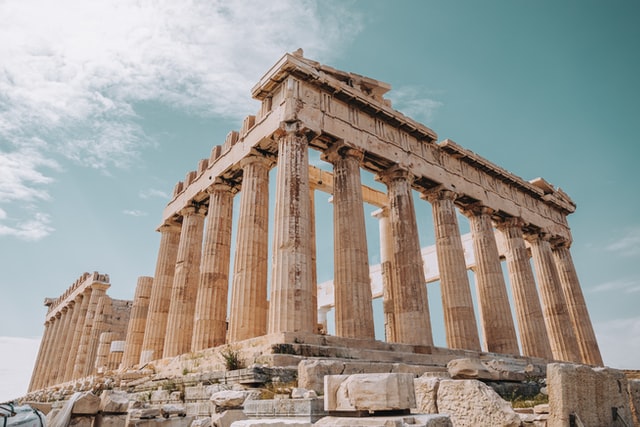Image Converter

The Ultimate Guide to Image Converters for Graphic Designers
Graphic designers are no strangers to juggling multiple file formats, ensuring compatibility across platforms, and maintaining image quality along the way. Whether you’re converting a raster image into a vector graphic, batch-processing dozens of files, or optimizing images for web use, an efficient image converter is a graphic designer’s trusted sidekick.
This guide dives into the essentials of image converters, from understanding their purpose to choosing the best tools and maximizing their potential in your workflow. By the end, you’ll feel confident about leveraging image converters to save time and enhance your design projects.
What Are Image Converters, and Why Do Graphic Designers Need Them?
An image converter is a digital tool that transforms images from one format or type to another. For a graphic designer, this is often more than just swapping JPGs for PNGs. It can involve converting raster images like photographs into editable vector graphics, resizing images without losing quality, or optimizing them for specific uses like websites or print.
Graphic designers rely on image converters to maintain efficiency and meet specific project requirements—without getting bogged down by technical constraints.
Common Scenarios Where You Need an Image Converter:
- Converting a low-resolution raster logo into a high-resolution, scalable vector image.
- Batch-converting multiple images into lighter file formats like web-optimized JPGs.
- Switching file formats for compatibility across software (JPG to PDF, SVG to PNG, etc.).
Image converters streamline these processes, allowing designers to focus on their creative work rather than tedious technicalities.
Types of Image Converters
1. Raster to Vector Converters
If you’ve ever needed to scale a pixel-based image (like a JPG or PNG) for print or high-resolution outputs, you know how tricky it can be. Raster to vector converters transform pixel data into paths and shapes, creating infinitely scalable images perfect for logos and illustrations.
Example Tools: Adobe Illustrator’s Image Trace, CorelDRAW, Vector Magic
2. Image Format Converters
These converters allow you to switch between file formats as needed—JPG to PNG, GIF to SVG, and beyond. They’re essential for ensuring compatibility across devices, platforms, or software tools.
Example Tools: Convertio, CloudConvert, XnConvert
3. Batch Image Converters
Efficiency is key in a designer’s day-to-day workflow. Batch image converters help process dozens or even hundreds of images at once, whether resizing, renaming, or converting formats.
Example Tools: IrfanView, FastStone Photo Resizer, BatchPhoto
Benefits of Image Converters for Graphic Designers
1. Save Time and Effort
Manually converting dozens of images is tedious and time-consuming. Image converters automate these tasks, freeing up your schedule for more creative ventures.
2. Improve Image Quality
High-quality converters ensure that your images retain sharpness and color fidelity, even when being resized or reformatted. Some tools offer advanced algorithms for lossless compression and conversion.
3. Ensure Format Flexibility
Not all platforms and apps handle every image format equally. An image converter gives you the freedom to work across multiple tools and mediums without worrying about compatibility issues.
How to Choose the Right Image Converter
Selecting the best image converter depends on your unique needs as a graphic designer. Here’s what to consider:
1. Define Your Conversion Needs
- For vector work: Prioritize tools with advanced raster-to-vector capabilities.
- For bulk projects: Look for batch-conversion features.
- For web optimization: Focus on tools that compress files efficiently without quality loss.
2. Look for Essential Features
- User-friendly interface for smooth navigation
- Support for a wide variety of file types (JPG, PNG, SVG, TIFF, etc.)
- High-quality conversion algorithms to retain resolution and detail
- Batch-processing capabilities to handle large-scale projects
3. Recommended Tools for Designers
- Adobe Illustrator: Industry favorite for raster-to-vector conversions.
- XnConvert: Versatile format converter for desktop use.
- Vector Magic: Dedicated to precision vectorizations.
- CloudConvert: Web-based tool for format conversion, supporting over 200 file types.
Tips and Best Practices for Using Image Converters
1. Maintain Image Quality
When resizing or converting, use lossless formats like PNG to retain details. For vector work, ensure that paths and shapes are cleanly traced and export at the correct resolution.
2. Consider File Sizes
Large file sizes can slow down your workflow. Compress images for web use while preserving quality by using compressing tools like TinyPNG or Kraken.io.
3. Leverage Batch Conversions
If your tool supports it, set up batch-processing workflows for repetitive tasks like resizing or reformatting. This can significantly speed up projects involving large numbers of images.
Real-World Examples of Image Converters in Graphic Design
Case Study 1: Scaling Artwork for Print
A designer needed to use a small JPG version of a client’s logo for a large-format billboard. Using Vector Magic, they converted the raster logo into a scalable vector file (SVG), ensuring the design maintained clarity no matter the size.
Case Study 2: Optimizing a Website Project
A web designer working on an e-commerce site used XnConvert to batch-convert 500 PNG product images into optimized JPGs, reducing the website’s total size and improving load times.
Case Study 3: Creating Editable Illustrations from Photographs
An illustrator used Adobe Illustrator’s Image Trace to convert photographs of hand-drawn sketches into editable vector formats, saving hours of manual tracing work.
Make Image Converters Your Secret Weapon
Image converters aren’t just useful—they’re essential for every graphic designer’s toolkit. They save time, improve quality, and provide the flexibility you need to tackle any project with confidence.
Whether you’re converting a raster image into a sharp vector, optimizing dozens of images for a client’s website, or switching formats to ensure compatibility, the right image converter transforms how you work.
Why not start empowering your workflow today? Explore the tools we’ve recommended and bring even more efficiency to your creative process.





